Large-scale 3D printing spans several technologies, multitudes of materials, and a vast array of applications. What defines large is open to interpretation, but certainly, houses, boats, and life-size furniture qualify. These examples and many more are entering the mainstream as manufacturers, artists, and businesses turn to 3D printing for their large-scale product needs, whether it’s buying a large-scale 3D printer or turning to a 3D printing service.
Every year 3D printers get larger as machine makers push the boundaries of technology with new printers to print more and print bigger.
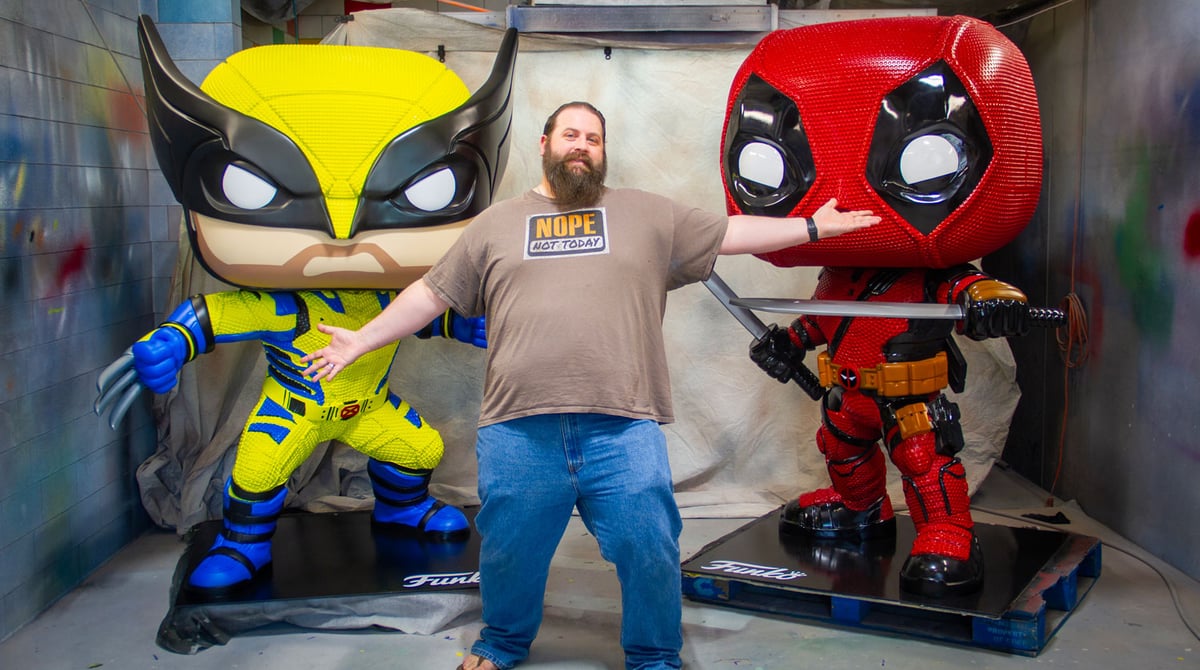
Let’s take a look at what it means to print large through the lens of specific things you may want to print:
- Displays, Props, & Signage
- Furniture, Boats & Vehicles
- Houses, Bridges & Architectural Elements
- Industrial & Metal Parts
In each section, we feature examples of large-scale parts and how they were made, by whom, often with the brand of 3D printer used.
But if you want to order your large 3D printed part instead of printing it yourself, there are a growing number of companies that specialize in this area.
Displays, Props & Signage
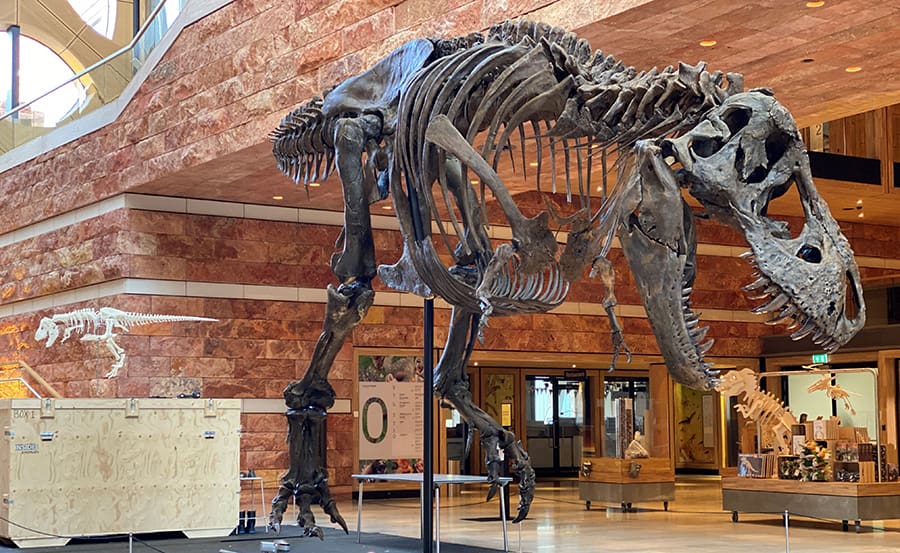
Museum curators, movie set and prop designers, amusement parks, convention and expo display makers, and countless others are turning to large-format 3D printers for faster and more affordable production of large objects. Besides the speed and cost advantages, no sculptural or artistic talent is required outside of creating the digital model in computer-aided design (CAD) software. Plus, there’s a vast array of possible materials, from ultra-lightweight foam to extremely durable carbon-fiber-filled nylon.
One great example is the life-size T-Rex shown above from the Fukui Prefectural Dinosaur Museum in Fukui, Japan. The museum couldn’t buy a T-Rex or dig one up, so it turned to the next best thing, 3D printing. Based on 3D scans from actual T-Rex fossils, it commissioned a 12-meter-long and 5-meter-tall life-size replica printed in large parts using two large-scale 3D printers from the company Builder Extreme. The T-Rex was printed in PLA plastic filament.
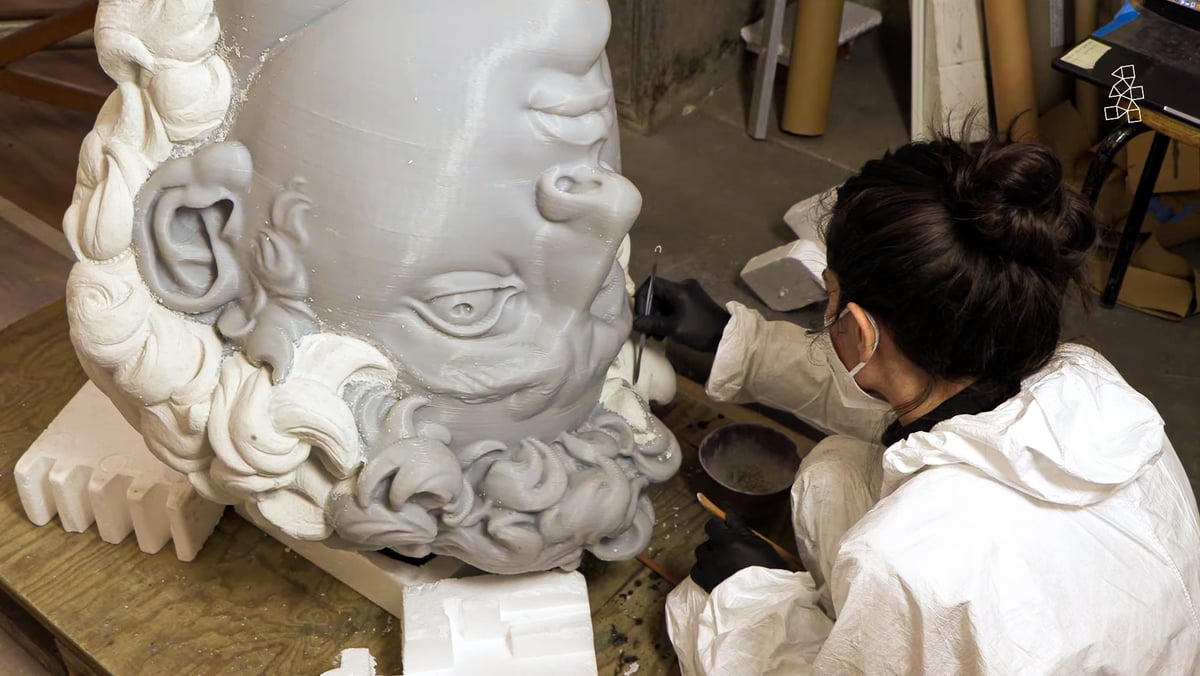
Another example is this 17-foot, 3D printed twin of Michelangelo’s David (above) that went on display at the Dubai Expo 2020 to promote tourism in Florence. A polymer 3D printer large enough to produce the replica in one piece at super fine detail was impossible, so it was divided into 14 printable pieces and then assembled by hand. The marble appearance came from a hand-painted layer of plaster containing marble dust.
Inside 3D printed David is a lattice structure that helped keep its weight to just 550 kg or about 11% of the original marble David, yet it was strong enough to pack and ship.
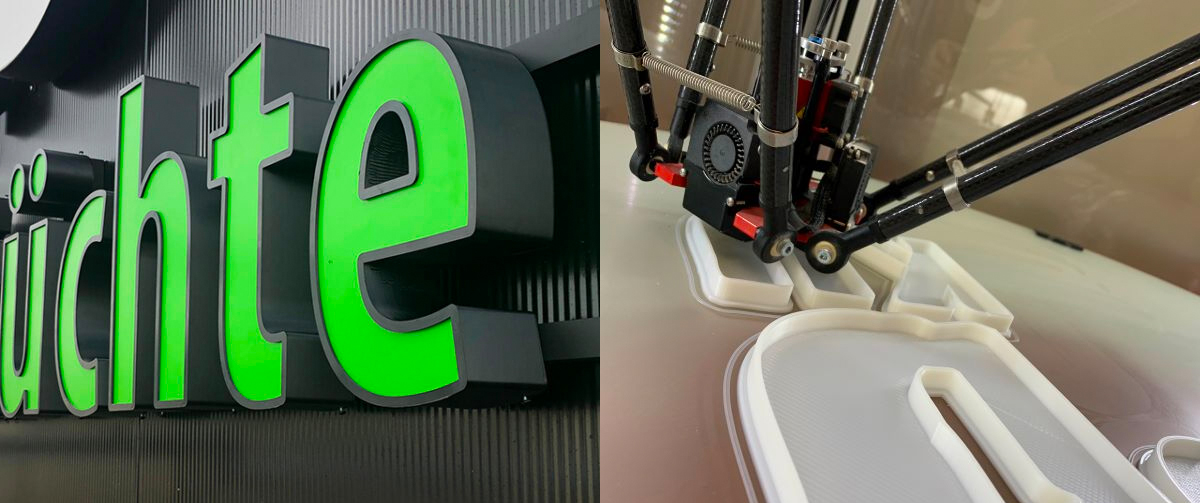
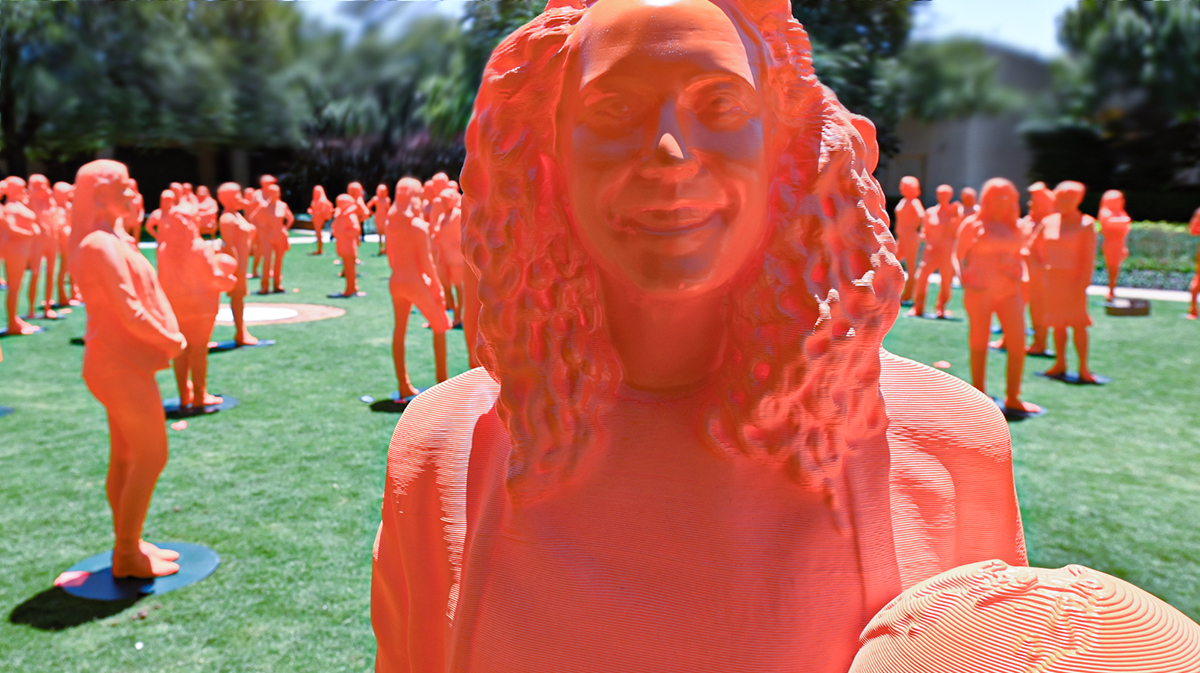
Last spring, the Smithsonian Institute in Washington, D.C., installed an exhibit honoring women scientists (above) that included 120 life-size 3D printed statues of their likenesses. Called “IfThenSheCan – The Exhibit”, it was the largest collection of statues of women ever assembled at a single location at one time. Each statue was printed using FDM technology.
Furniture, Boats & Bikes
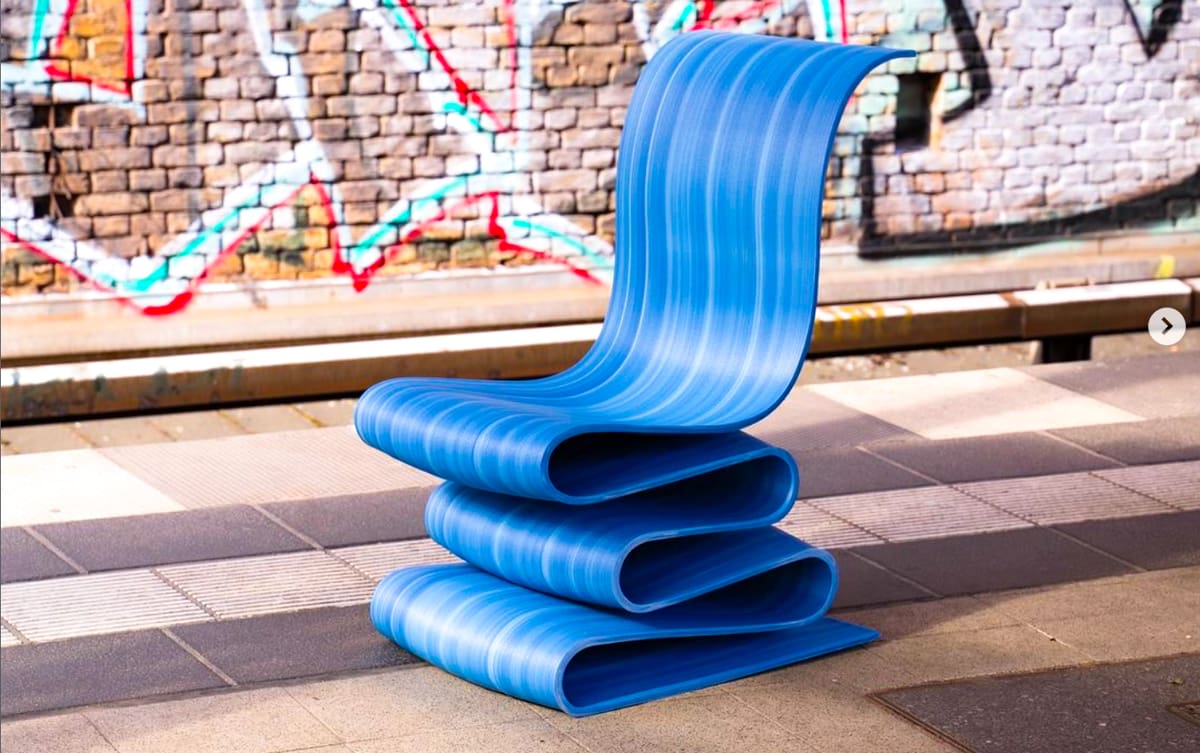
Interior designers are turning to large-format 3D printing to realize their visions of intricate design and unique materials. Polymers, especially recycled plastics, are the most used materials for 3D printed furniture and chairs are the focal point.
At the 2024 Berlin Design week, young designer Philippe Bietenholz displayed his simple, yet innovative 3D printed chair (pictured above). Constructed in one piece in recycled polypropylene infused with glass fiber by a robot-arm 3D printer at manufacturer Mates, this Bounce chair can easily be recycled again.
This child-size school desk in Gambia (below) is an example of 3D printing solving a practical need. Lightweight and durable, this design can be produced in recycled plastic, also solving the plastic waste problem. This model was printed in PETG plastic commonly used for beverage bottles, on the Magnum 3D printer from The Industry Sweden.
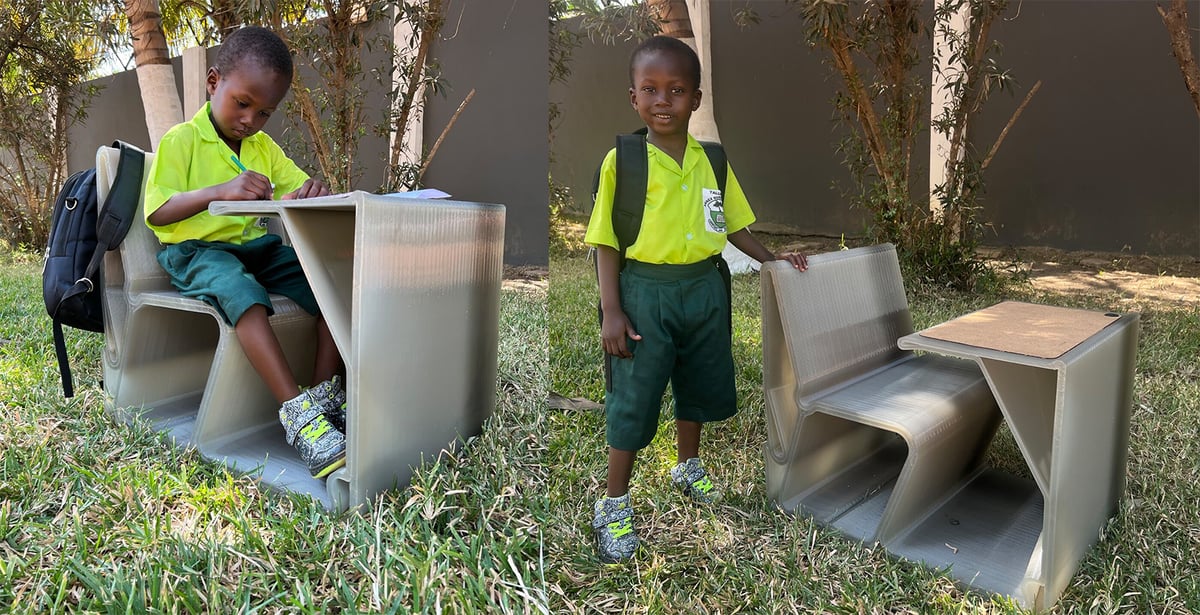
There are countless examples of beautiful 3D printed chairs and tables, but some of the most recent examples include the lovely soft yarn look of the Woven Loopy Chair designed by Gareth Neal (below left) and 3D printed with a robotic arm 3D printer by the New Raw. There also the Steam lounge chair designed by Slicelab and 3D printed with PETG pellets on the EXT 1270 Titan Pellet 3D printer from 3D Systems (below center) and a chair 3D printed with 50% recycled wood by designer Türkiye Simge Goorany.

Entered into the Guinness Book of World Records as the largest solid 3D printed item to date, is the specimen below (left), the 3Diringo, measuring 7.72 meters long. Printed by the University of Maine Advanced Structures and Composites Center in 2019 on its MasterPrint 3D printer, the boat is made of plastic and wood cellulose, was 3D printed in just 72 hours, weighs 2.2 tons, and yes, it does float. In April, the University of Maine unveiled its newest large-format 3D printer, even bigger than its first. The new Factory of the Future (FoF 1.0) FoF 1.0 can print objects up to 96 feet long, 32 feet wide, and 18 feet tall (29 x 9.8 x 5.5 meters) and with a remarkable output rate of 500 pounds (227 kilos) per hour. Perhaps, and even bigger boat is planned.

Also in the Guinness Book of World Records as the largest 3D printed boat is the 3D printed water taxi (above, right) manufactured by Al Seer Marine and Abu Dhabi Maritime. Crafted out of recycled polymer with a custom-built robotic arm 3D printer by CEAD, Al Seer Marine plans to manufacture dozens of these boats for the Abu Dhabi region to be introduced later this year. The 12-meter-long and 3.6-meter-wide water taxi will hold 29 passengers with spaces for bicycles and wheelchairs.
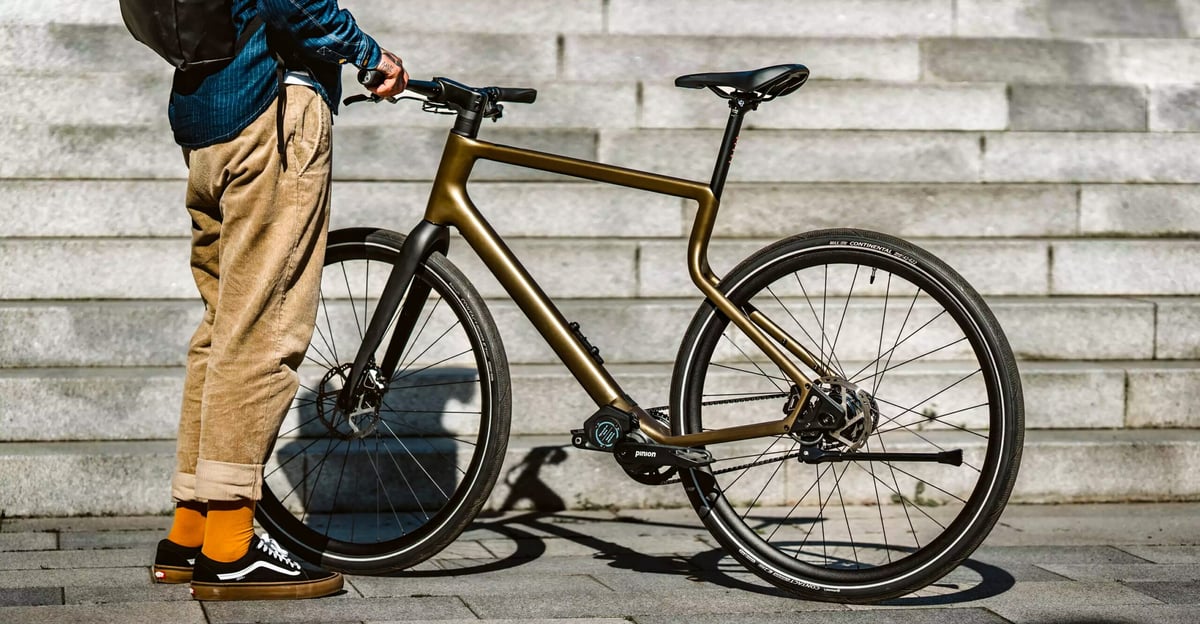
Bicycle makers have tuned to 3D printing in the past several years to solve the biggest problem in their manufacturing chain, welding. 3D printing frames as single pieces not only saves time but enables new design freedom that isn’t limited by structural joints. Bike makers have produced models in titanium, steel, and carbon-fiber composites.
The steel-framed e-bike below from Urwahn is mass-produced using metal 3D printing to create a balance of form, function, lightweight construction, and material. The special rear end suspends the rear wheel elastically and generates a new kind of riding comfort, the company says, while the steel frame integrates the motor and battery.
Houses, Bridges & Architectural Elements
The largest 3D printing projects are buildings and houses, and they’re getting larger every year. The two-story barrier was broken just a few years ago, and now the aim is to reach even higher.
Although few buildings are just 3D printed and often require or combine structural supports, such as rebar reinforcement or traditional timber-frame construction, the technology is finding its way into projects from homes to hotels because of its speed, labor savings, and durable construction. The global construction 3D printing market (something that didn’t exist not long ago) is projected to grow nearly 20% in the next five years.
The two-story building below by architectural design and engineering firms Hannah and Cive with Peri 3D Construction behind the 3D printer, showcases the engineering feat of construction 3D printing. The 4,000-square-foot home has already been sold to an anonymous bidder and will take a total of two years to complete. Peri’s Cobod Bod2 gantry printer, a household name in the 3D printing construction world, is used to extrude the specialized concrete mix into stairwells and other functional structures in a total of 330 active printing hours.

In addition to the construction of buildings, 3D printers are widely used for architectural elements, including façades and historical accents for restorations, as well as interiors, including walls, displays, and room dividers. There are even 3D printed floors, 3D printed bridges, and 3D printed artificial coral reefs.
Concrete-like materials aren’t the only option in architecture, polymers also play a role. Specializing in large-scale 3D printing with robotic arm polymer extrusion machines, Branch Technology creates everything from sculpture to space habitats. Its innovative architectural panel system called BranchClad opens up new opportunities in building façades. Just take a look at the lunar surface installed on the side of the US Space and Rocket Center’s new Space Camp Operations (below). Created using a lunar digital scan, these facades show amazing fidelity to the moon’s surface. The positive mold of the lunar pattern is 3D printed and then coated with a stucco material.
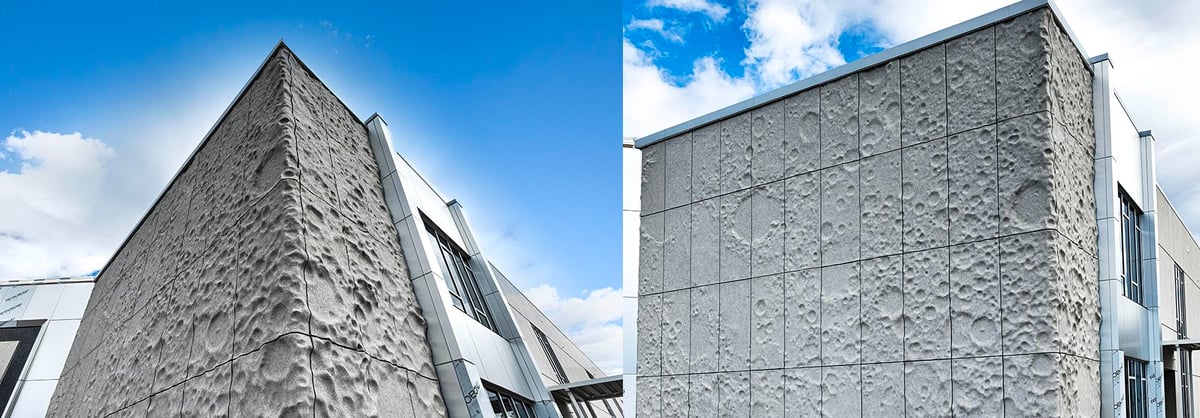
Industrial & Metal Parts
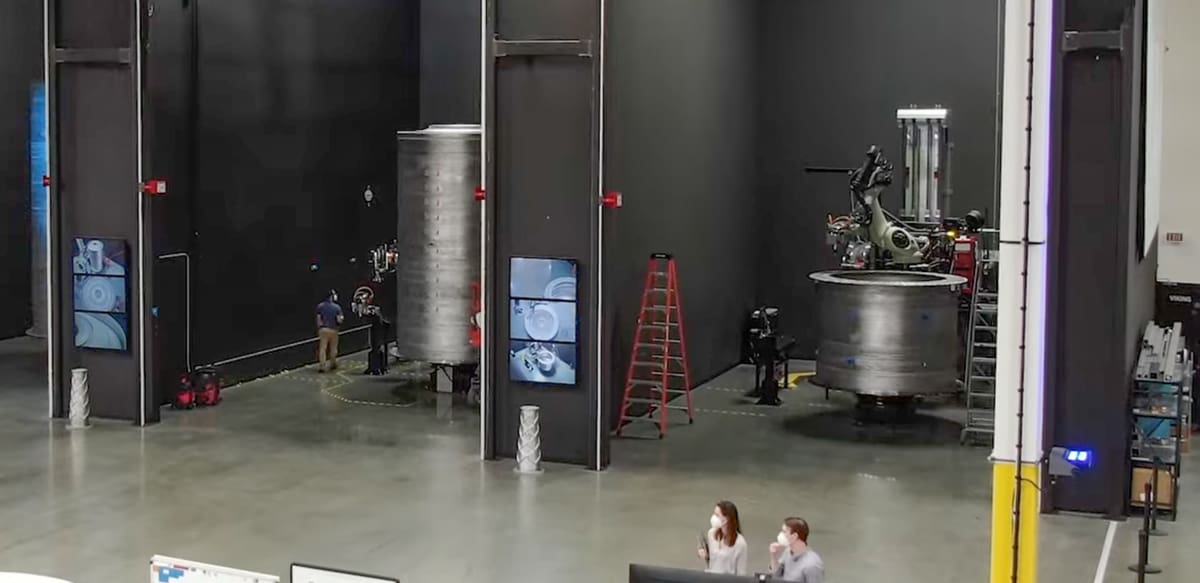
Rocket maker Relativity Space claims that its 3D printed rocket, the Terran 1, was the largest single 3D printed structure ever made, and they may be right. Before its recent launch and ocean “landing”, it stood 35.2-meters tall and had a 2.3-meter diameter. The company’s next rocket Terran R is just as big. Both were 3D printed in a proprietary metal with the company’s Stargate 3D printers, which use robotic arm wire directed energy deposition technology.
The rocket’s ability to withstand the pressures of the launch was a big win, the company said, proving the structural integrity of its metal 3D printing method.
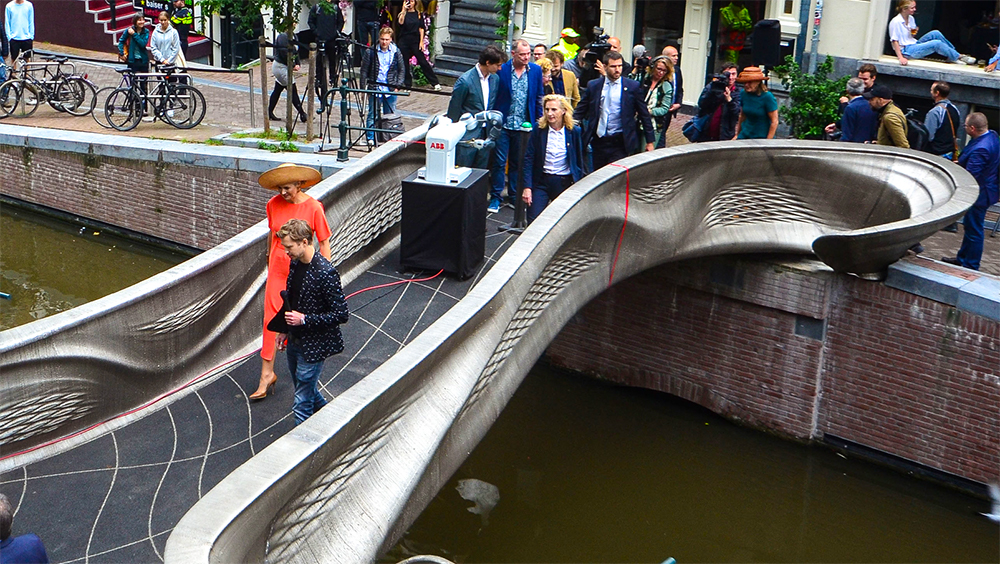
The metal bridge (above) spanning a canal in Amsterdam designed by Joris Laarman Lab was printed by MX3D using robotic arm wire arc additive manufacturing technology. The 12-meter long, stainless steel “smart bridge” includes an embedded sensor network that helped Amsterdam researchers study the role of IoT systems in the built environment. The structure was developed with generative design and topology optimization techniques to enable its stunning design while making it lighter. It was, however, not intended to be permanent and was removed last autumn after its two-year permit ended.
The beauty of the MX3D bridge highlights the use of metal 3D printing for art and sculpture. Below is another MX3D-printed creation by artists Mariagrazia Abbaldo & Paolo Albertelli installed in Torino, Italy’s Royal Gardens. Called “The Whale Pass,” the 880-kilo sculpture shows the fins of passing whales emerging from the ground as if they were the open seas. The artists chose metal 3D printing for the final work in part because it follows their design process. All the models made during the project were 3D printed.
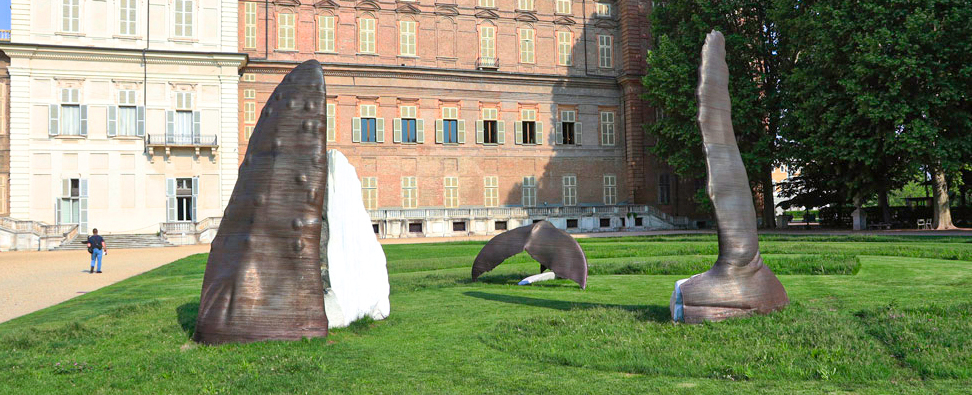
Looking at large-scale metal 3d prints for industrial use, companies in the marine, oil & gas, and heavy construction equipment industries are able to produce large parts much faster and often on-site. For example, the marine propeller below 3D printed using WAAM technology to produce a near-net shape that is then machined to tighter tolerances. WAAM, in this instance, replaces forging and can be done closer to the point of need using less raw material.
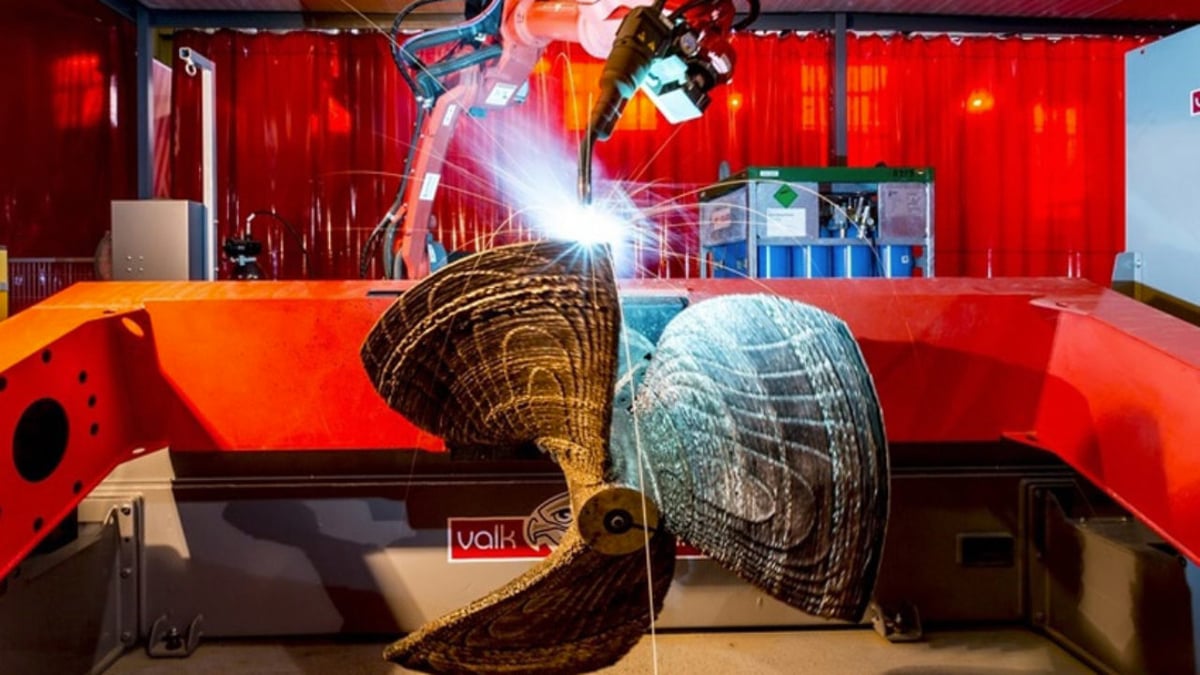
3D printing metal also enables parts to be lighter weight since 3D printing can produce shapes not possible with forging or casting. The airplane landing gear component (below), at 455 x 295 x 805 mm, is the world’s first laser powder bed fusion 3D printed part of its size, according to printer manufacturer SLM Solutions. Not only is the component 15% lighter than a traditionally forged component, the technology also slashed the turnaround time.
Since the component is a part of the system that transfers loads from the wheel to the plane’s structure, it was manufactured out of titanium for strength. The choice of material gives the part strong mechanical properties while being corrosion-resistant without coatings. It was printed using the quad-laser SLM 800 3D printer.
“Additive manufacturing contributes to saving time in the qualification and certification phases by rapidly providing the parts for testing. We were able to produce the main fitting in a few days vs. a few months with the forging process,” says Gerhard Bierleutgeb, EVP of global services and solutions at SLM Solutions.
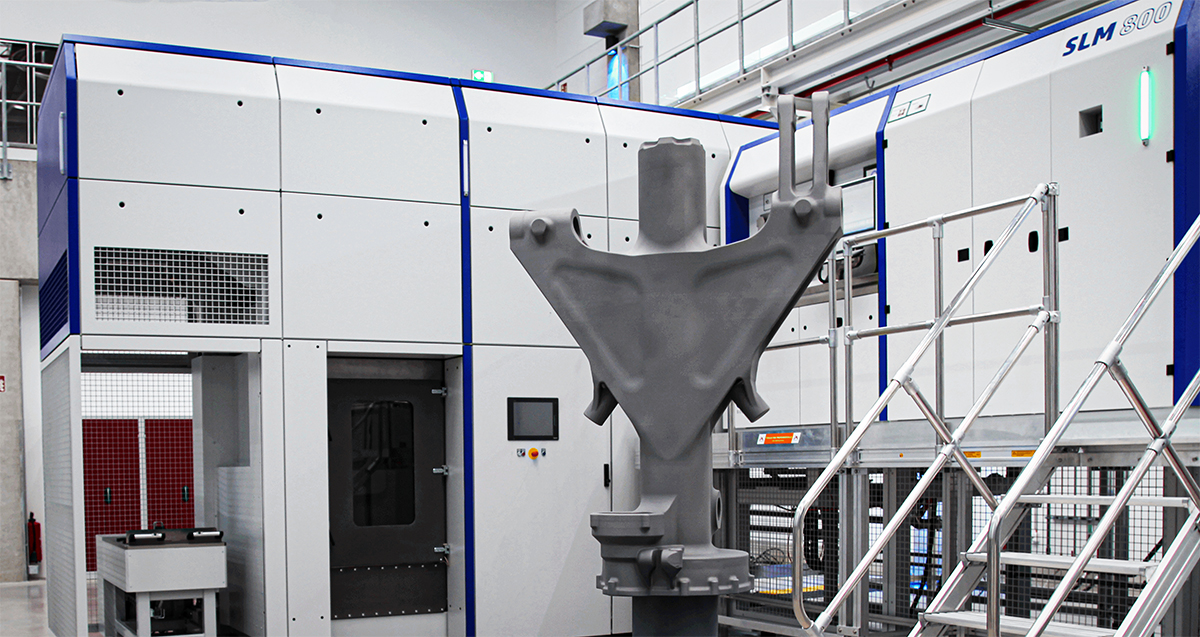
3D printing large molds for casting metal parts is another application of 3D printing that favors size. For metal industrial parts that must be cast, the mold-making step is labor-intensive and time-consuming. With sand 3D printers, manufacturers can directly 3D print sand casts and molds without ever needing a full-size model. The VX4000 from Voxlejet (below) is the world’s largest sand mold 3D printer using binder jet technology to turn out not only huge molds but potentially thousands of molds in one print session.
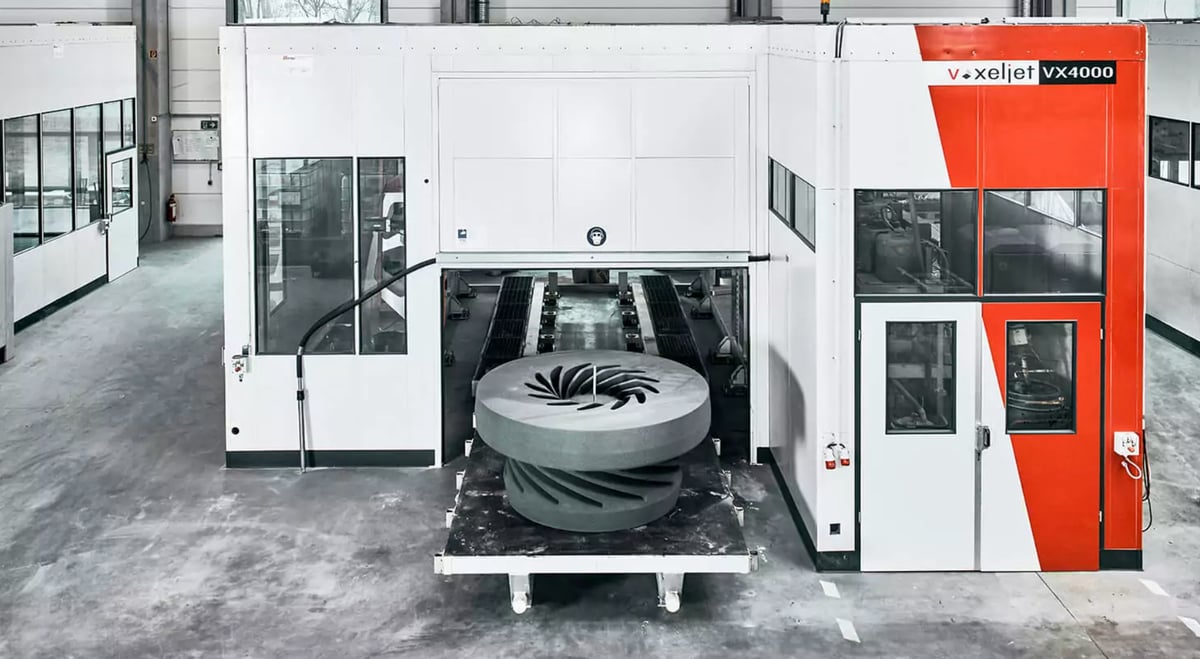
Design Tips & Software for Large-Scale Printing
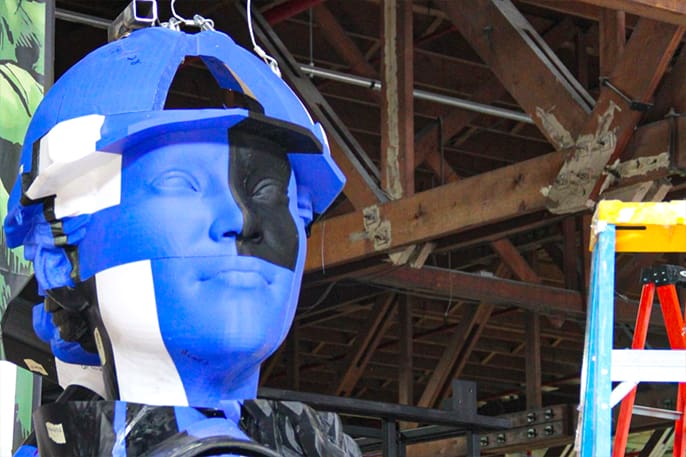
If you want large items, 3D printing in one piece is often ideal since it eliminates assembly labor, speeds up production, and can increase structural integrity because there are no joints or seems. In the next section, we list the largest 3D printers available in a wide range of technologies.
But large printers aren’t your only option. When your object is just too large for even the largest machine, you’ll can segment it into pieces. Let’s take a look at the best way to accomplish printing in puzzle pieces to ensure a perfect fit.
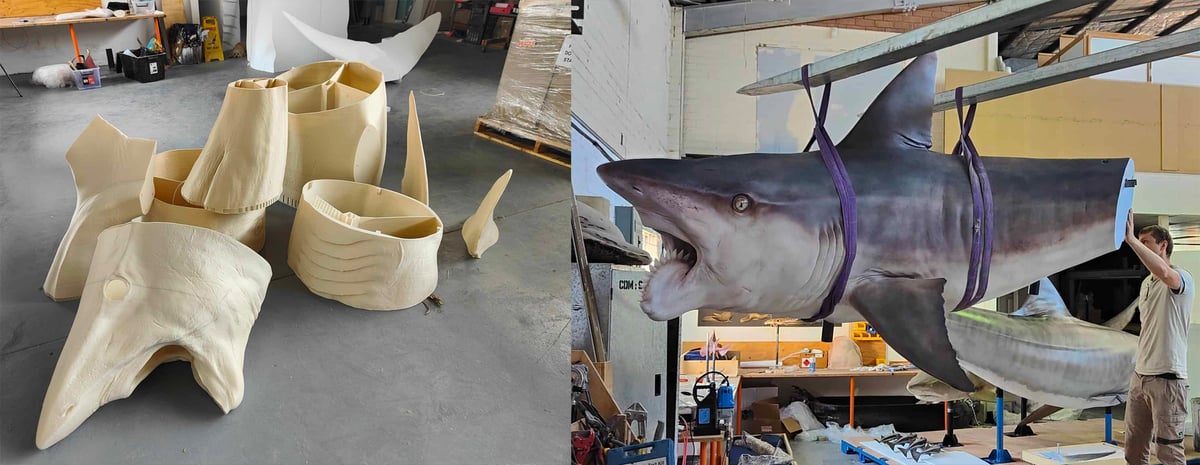
How to Split a Model into 3D Printable Pieces
To accomplish large-scale 3D prints, you can segment your model directly in your CAD software, such as Fusion or Solid Works, which has the advantage of letting you design some assembly and alignment aids, such as pegs, bump and groves, lips, or hole and slots.
If you simply plan to glue your large object together or use screws (which are only applicable with more robust materials such as carbon-fiber-filled nylon) you can leave the segmenting to your slicer tool, such as Cura. With Cura’s Mesh Tools the segmentation is quick and automated.
When segmenting your digital model manually, avoid cuts that go directly through detailed areas and split your model to require the least amount of support. You may want to avoid splitting at the weakest points in a design, namely those areas that are much thinner than the rest of the model.
For more on manual model splitting, check out our full guide linked below.
The Largest Large-Format 3D Printers
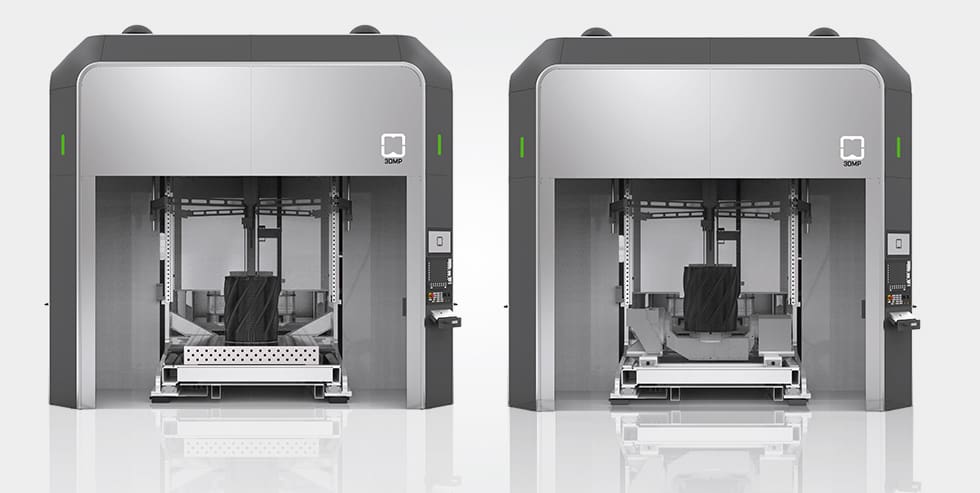
If you’re shopping for a large-format 3D printer, there are many to choose from. If you aim to create plastic parts, such as displays, props, and signage, there are large-format filament 3D printers that are essentially giant versions of the desktop filament printers you may already be familiar with. Some are capable of printing with engineering-grade durable materials.
In the guide linked below, which we keep updated with the most current products, you’ll find the top 12 names in large-format plastic filament printers.
If you want to go larger than the largest filament printer (+1,600 x 1,200 x 1,300), you’ll need a robotic arm 3D printer. These are just like they sound; a robotic arm with an extruder head mounted on the end. They can be placed on a track or an overhead gantry, so they, theoretically, can print to the size of the available track.
Another advantage of robotic arm printers is that they typically print with polymers in a more economical pellet format. If you’re looking for a robotic arm 3D printer, we’ve got you covered with our guide to the best; just follow the link below.
Resin 3D printing generally isn’t available larger than 1,000 mm except for a few rare exceptions, such as the Kings 1700 Pro and the 3D Systems ProX 950, because of the extremely long print times. Resin generally takes far longer than any material extruded through a nozzle.
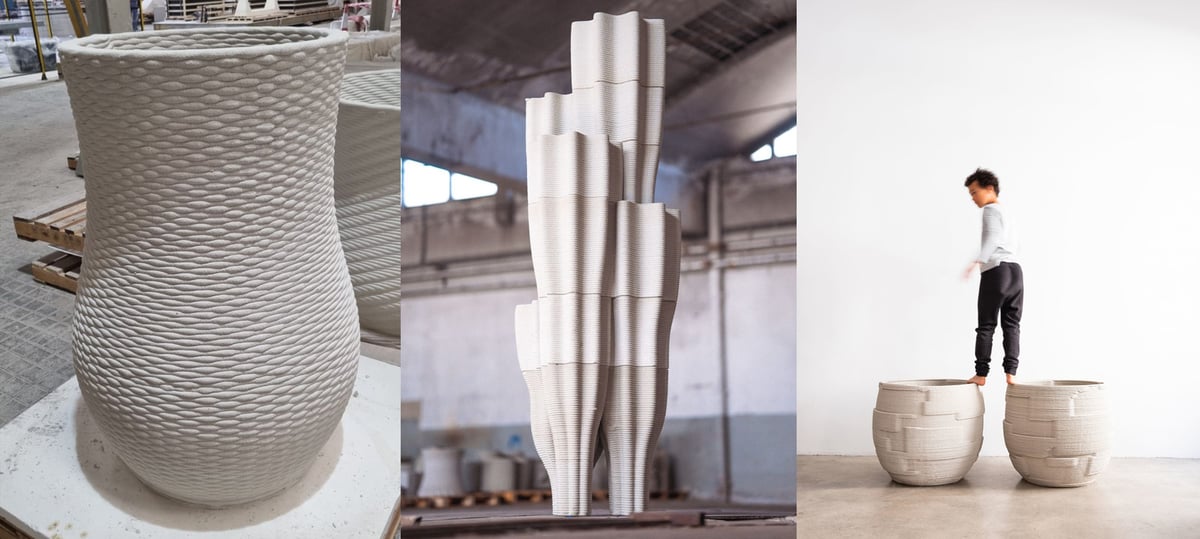
Concrete 3D printers are a surging market not only for home construction but for any type of concrete form, furniture, architecture, and even planters and sculpture. At the end of our guide to concrete 3D printing, you’ll find the latest offering of concrete 3D printers.
3D printing very large metal parts is typically achieved with one of the directed energy deposition 3D printing technologies, such as wire arc additive manufacturing (WAAM). These methods use 3D printing heads mounted on robotic arms with a broad reach and are only limited by the arm size. The largest metal printer, thought to be the Relativity Space Stargate, is a wire directed energy deposition 3D printer on a robotic arm. Stargate is not for sale but for a guide to WAAM machines that are, follow the guide linked below.
*currently only available in China.
Lead Image: The giant Factory of the Future (FoF 1.0) 3D printer was unveiled at the University of Maine in April 2024. It can print a single object roughly the size of an adult blue whale.
License: The text of "The Biggest Things You Can 3D Print" by All3DP Pro is licensed under a Creative Commons Attribution 4.0 International License.





